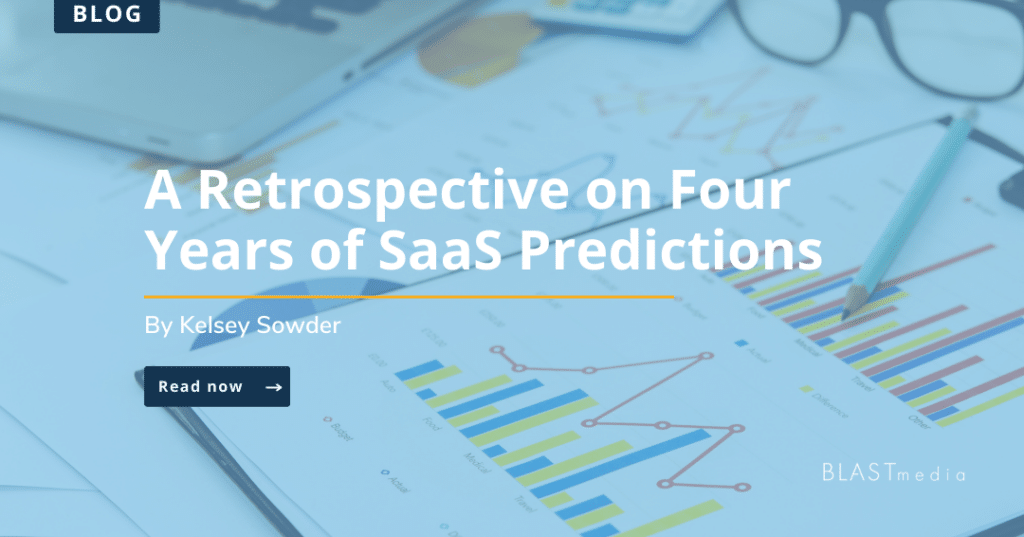
Predictions season has been a large part of our SaaS clients’ Q4 and Q1 plans for five years. Having tracked the numbers over those years, I thought it’d be prudent to review our results ahead of 2024’s predictions season.
The first thing I learned? It’s getting harder to secure predictions coverage. We peaked in 2020 at about five pieces of coverage per client, after which our results started to decline. While this could look discouraging, our clients still receive about three pieces of coverage each season.
As we gear up for the 2024 predictions season — no, I’m not crazy for thinking ahead, considering we ramp up for predictions as early as August — here are the learnings we’ll use to inform our approach.
Learning #1: Ratio of PRs to journalists has increased. So…
(*Muckrack estimates there are 6.2 PR people for every journalist)
A. your predictions have to be punchier than ever to stand out
Bland, vanilla, mild…no, I’m not talking about food. I’m talking about uninteresting quotes that never garner coverage. It’s common for subject matter experts (SMEs) to be wary of taking a strong stance for fear of being wrong. But that’s the beauty of predictions: they’re just that — an informed guess about the future! I’m not saying SMEs should make wild statements just for coverage’s sake. But, I am saying SMEs should get more comfortable taking a stance that may be unheard of or unpopular.
Here’s an example I love from Authenticx CEO Amy Brown. It’s bold, punchy, and calls out a prevalent issue in the healthcare industry.
“We don’t have a lack of data in healthcare. We have a value-realization problem with the data we already have. I foresee a greater investment in solutions that digest unstructured data in ways that give you much better eyes and ears into the state of your business and the state of your patient experience.”
B. there are fewer opportunities in general
This is an unfortunate truth, but it’s par for the course as more companies wise up to the importance of thought leadership. Media outlets have also fallen victim to our current economic situation, with outlets like Adweek, Insider and NBC letting go of significant portions of their newsrooms. Meanwhile, other outlets like Protocol and Buzzfeed News have folded completely.
Long story short, there are fewer opportunities and more competition.
Learning #2: Get buy-in for participation from a wide bench of spokespeople
As media continues to prioritize commentary from first-hand practitioners, C-suite executives and other director-level spokespeople become prime resources to tap for media opportunities. These SMEs have boots on the ground and can accurately assess what’s next in their respective fields.
Check out this hot take from someone outside the C-suite, Scott Register, vice president of security solutions at Keysight Technologies.
“Deepfake technology to date has resulted in political confusion, internet chatter, and some amusing mashup videos, but expect this to change in the near term. Security experts have warned for years about the possibility of social engineering attacks with deepfakes, and the technology has matured enough for 2023 to see hackers successfully leverage it. We will see an increase in image generation, generated audio, and conversations that appear realistic, designed to trick recipients into sharing personal data or other sensitive information. The deepfake threat isn’t relegated solely to consumers; we’ll likely see threat actors spoof a Fortune 100 CEO in an attempt to defraud or otherwise damage the organization.“
Learning #3: Content continues to be a great way to secure predictions coverage
More than half –– 60 percent –– of our SaaS PR predictions coverage was contributed content. Another observation: most of our content coverage ran during the latter half of the predictions season, with quotes and interviews predominantly running in Q4 2022.
Although a balance of predictions coverage is ideal (from quotes to features and beyond), content is a fantastic way to control messaging and tell a story. Plus, it extends the life of a predictions campaign. The more content created and placed, the greater the extension of the campaign. One final thought: the greater incidence of content could be related to Learning #1 –– smaller newsrooms and more PRs for every journalist, which translates to quicker wins from contributed content.
Our plan forward
To optimize our efforts during prediction season, it’d be beneficial to use the same approach for pitching quotes and features when pitching contributed content: secure a request before building out the prediction. Additionally, in 2024, we’ll aim to secure at least one contributed content prediction piece per client. By taking these steps, we can optimize our time and effort dedicated to predictions campaigns.
If you’re a journalist, join the conversation. What do you think about prediction pieces? And if you’re a client, ask us how we can maximize this campaign for you.
